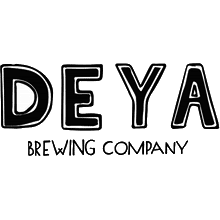- Groundwork
- Market Engagement
- Groundwork
- Market Engagement
Summary of the Bwlch Y Groes Peatland Restoration Project
The Roberts family have been farming at Pennant Farm in Wales for several generations and focus predominantly on beef and sheep farming. In 2020, they started to explore the restoration of one of their peatlands, a 66-hectare degraded blanket bog in Bwlch Y Groes, using a mixture of carbon finance and public funding from the Welsh government. They sold 2,335 carbon units via the IUCN UK Peatland Code to a brewery company in Cheltenham, making this first carbon-funded peatland restoration project in Wales.
Farm Profile:
- Location: Gwynedd, Wales
- Size of Land: 66 hectares
- Land Ownership: Owner occupiers
- Nature Market Primary Focus: Peatland Carbon
- Interventions: Peatland restoration (rough grazing, revegetating, blocking gullies)
- Project Partners: Snowdonia National Park Authority, Forest Carbon
Acknowledgements
With thanks for giving their time and insight to this case study:
Lisa Roberts, Farmer, Pennant Farm
Ben Woodliffe, Taproom Supervisor and Sustainability Lead, DEYA Brewing Co
Rachel Harvey, Peatland Officer, Snowdonia National Park Authority
Date Published: 20/10/2023
Key Takeaways
- The Roberts family decided to use a broker to sell their carbon units via the Peatland Code.
- As the family were unsure about future prices, they wanted to sell all of their units upfront, but with a clear idea of their break-even price across the 30-year agreement.
- They also wanted to sell to a company that was clearly trying to track and reduce its own carbon footprint.
- Going forward, the Roberts family are interested in verifying more of their peatland restoration using the Peatland Code, but may retain further units for their own offsetting.
How did the Roberts family approach potential buyers?
The Roberts family, with the help of the Snowdonia National Park Authority, calculated that they had 2,335 carbon units to sell via the IUCN UK Peatland Code (the Peatland Code). More detail can be found on this process in Milestone 3.
With no prior experience of voluntary carbon markets, the Roberts family were unsure as to how to approach buyers. They engaged a broker, Forest Carbon, which was one of the first Peatland Code brokers in the UK. Forest Carbon had a track record and offered to lend a portion of the unit sales up front, with the balance paid once a buyer was found. This provided assurance to the Roberts against their uncertainty about market demand. They also agreed to the percentage commission that Forest Carbon would take once sales were completed.
Forest Carbon distributed a brief overview of the Bwlch Y Groes project amongst its network of potential buyers and received expressions of interest from four separate organisations. It hosted virtual meetings between them and the Roberts family over the course of a month in 2020. The Roberts Family accepted a final offer from DEYA Brewing Co, a brewery based in Cheltenham, England, for all 2,335 units.
Ben Woodliffe, Taproom Supervisor and Sustainability Lead at DEYA, said that peatland restoration appealed to DEYA. “I really liked the fact that peatland restoration delivers more than one benefit that is relevant to our business. As a brewery, clean water is one of our major inputs, and peatlands have great water filtration properties [and] on the project itself, the idea of purchasing from a single project that we could fully support was appealing,” says Woodliffe.
The Roberts family approved of DEYA’s long-term approach to sustainability and also its existing efforts to limit the carbon and environmental impacts of its business model. “It was important for us to sell carbon credits to a company that is trying to do things sustainably anyway, instead of the offsets being a standalone activity,” says Lisa Roberts.
How did they set the price of the carbon units?
Roberts stresses the importance for farmers to be clear on their minimum price across the lifetime of the project, and to have a rationale for how much to sell and by when: “We were early movers in this space and we didn’t have too many units to offer, so we were keen to sell as many as we could to mitigate the price risk,” she says.
The minimum price needed for the Bwlch Y Groes project was clarified by the financial additionality calculator that the Peatland Code requires as part of the project’s design. To meet the Peatland Code’s financial additionality test, the carbon financing element must be a minimum of 15% of the project’s funding stack.
The Roberts family, SNPA and Forest Carbon mapped the lifetime costs of the project against its public funding source – the Welsh Peatlands Sustainable Management Scheme. This identified the funding shortfall of the project to be met by carbon financing. Knowing the shortfall, the 15% financial additionality requirement, and the number of units it had to sell, the team established a minimum unit price that it needed. The Roberts family then set a unit price in discussions with DEYA, which was comfortable with the offered price.
What is next for the Roberts family?
Pennant Farm has more degraded peatland that is eligible through the Peatland Code, which Roberts says they may use again. “We’ve learned a lot since selling. The government and the market will focus more on farmers’ ability to decarbonise and manage land sustainably. We would be happy to use the Peatland Code process to prove that our restoration plans are credible but may need to retain units for our own offsetting. If we decide to sell units, we would like to keep our units within Wales and ideally within the agriculture industry,” comments Roberts.

